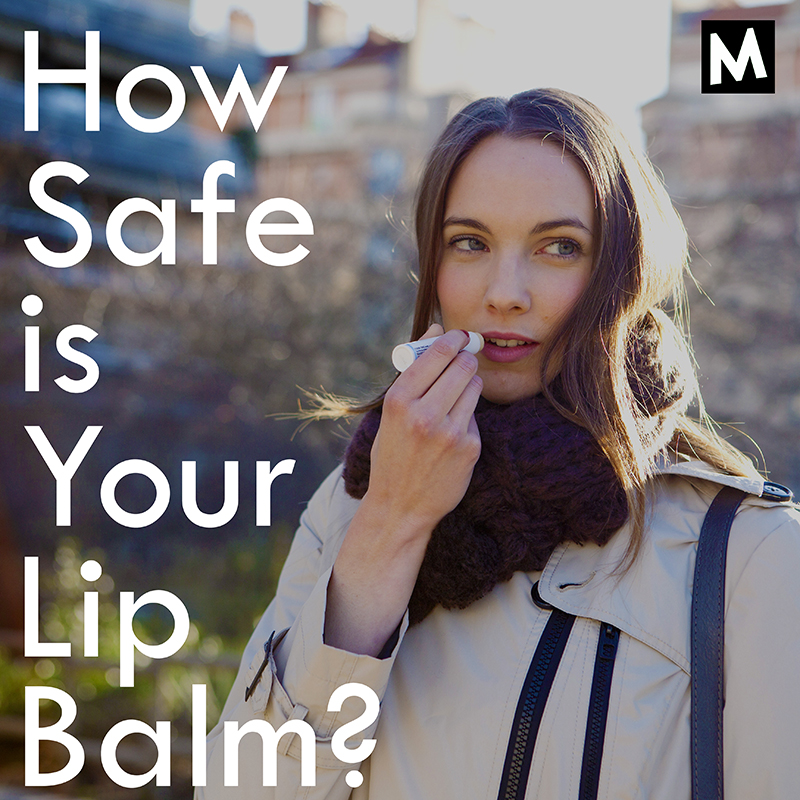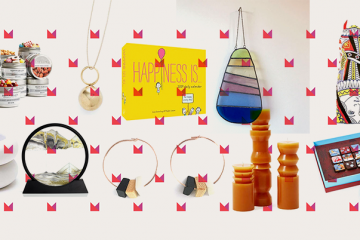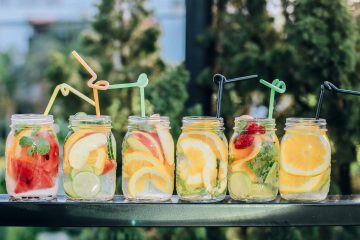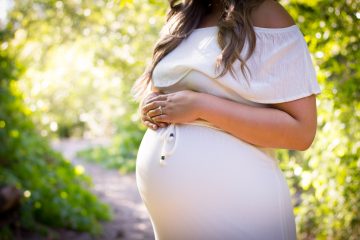How Safe is Your Lip Balm?
You apply it umpteen times a day, carry it in your purse, even share it with your kids—but how safe is your lip balm, really?
Most women I know hoard lip balm—they’ve got one in the car, one in the kitchen drawer, there’s one rolling around in the car, the purse, the coat pocket, the beach bag… Then when we’re at the checkout stand, ladies, we see a cute new packaging or intriguing new flavor, and we’re going to buy that one, too. Am I right? Lip products are used by 90 percent of American women, with lip balm being the most popular, according to research from Mintel. “Lip products are likely perceived as low-risk purchases, driven in part by their lower prices in comparison to face and eye make-up,” wrote Shannon Romanowski, a beauty and personal care analyst at Mintel. We slather these products on our mouths all day, every day, and one has to wonder: Are they truly low-risk?
What is the Concern?
“Taken alone, chemicals in any one consumer product may not cause harm. Unfortunately, people are repeatedly exposed to industrial chemicals from many different sources, including cosmetics, on a daily basis,” explains Ena Do, director of marketing and communications at the Breast Cancer Fund in San Francisco. “The average American woman uses 12 personal care products a day, resulting in exposure to as many as 126 unique chemicals from personal care products alone.”
This load from the personal care products adds to the heap of exposure we’re already getting from other chemicals in our air, water and food, and can end up in our bodies, breast milk, and children. It also gets into our environment, contaminating the drinking water and building up in our food chain.
Worse still, “There are companies that use ingredients that are not even approved for the lips in their formulations,” says Sharron Pinheiro, founder of Eve Organics Beauty. Consumers have to be careful when it comes to these ingredients (such as ultramarine blue), which can be toxic if ingested.” Also, certain sunscreen ingredients, such as oxybenzone, octinoxate and avobenzone, are found in a majority of SPF lip products, and are controversial. Pinherio recommends scrutinizing the ingredient list of your favorite lip product. “Make sure you are not applying any potentially toxic ingredients to your lips, because it is a guarantee that you will be ingesting it.”
Scary Ingredients
BHA: A preservative that can be an endocrine disruptor.
Parabens: (methylparaben, butylparaben ). Parabens are suspected of interfering with hormone function, an effect that is linked to increased risk of breast cancer and reproductive toxicity. Some studies claim they are completely safe, while other sources will warn you to steer clear. Personally, I feel why risk it?
Synthetic Color and Dyes: (FD&C Blue 1, Green 3, Yellow 5 & 6, Red 33)
Derived from coal tar, FD&C color pigments contain heavy metal salts that deposit toxins onto the skin, causing skin sensitivity and irritation.
3BHT (butylated hydroxytoluene): BHT has been show to mimic estrogen. It is linked to developmental and reproductive toxicity.
Fragrance: Fragrance can mean any one of hundreds of chemicals, some potentially toxic. Independent testing has found high levels of phthalates hiding under that umbrella term “fragrance.” (For more on this subject, check out the documentary Stink.) Phthalates are potent hormone disruptors linked to pre-term births, birth defects in boys, decreased sperm counts in men, reduced female fertility, and a worsening of allergy and asthma symptoms.
Hydrogenated cotton seed oil: It may be contaminated with arsenic, lead, and mercury.
Chemical sunscreens (Oxybenzone, Octinoxate, Octisalate, Octocrylene, Avobenzone, Padimate O): Chemical sunscreens penetrate the skin and may disrupt the body’s hormone system. The most common chemical sunscreen is Oxybenzone which has been shown to act like estrogen in the body and alter sperm production. If you’re looking for sun protection, Jane Iredale’s Lip Drink provides broad spectrum sunscreen with SPF 15 using titanium dioxide instead of chemicals. Bare Republic also makes an SPF line balm that is nonchemical; I found it at Target.
Petrolatum (petroleum jelly, mineral oil): Is derived from petroleum (oil), it needs to be refined, and some refining methods use toxic compounds. Petrolatum can be contaminated with PAHs (also found in car exhaust!). Skip it and choose options based on plant oils or beeswax.
What to Look for Instead
Phew. That was a long list of don’ts, I know. But there are plenty of safe options out there. “I suggest looking for lip products that contain plant-based waxes; high quality oils, organic oils such as avocado oil, raspberry seed oil and sunflower oil, cocoa butter, non-GMO vitamin E and organic aloe,” says Jane May Graves, the founder of Ladybug Jane vegan lip balms. Graves helped me hugely with the list above, by the way—thank you, Jane! She’d been using lip balm since she was 5 and went she went to create her eco, health conscious line, was appalled when she discovered what was actually in most of the products, particularly because her mother had been diagnosed with stage 4 cancer.
She was also surprised by another factor: How many lip balm products contain petroleum, beeswax, alcohol, phenol, and menthol. “At first these ingredients seem to soothe, but they quickly dry the lips. This drying leads to a need to reapply more frequently. It’s important to understand that the skin is the largest organ. The skin is a passageway that rids our body of toxins and helps prevent chemical and waste build-up, which is why it’s very important to allow the skin to breath. We often hear of ingredients acting as ‘protective barriers’ or ‘holds in moisture’. This is actually the opposite of what you want, an airtight barrier on the skin, not allowing for normal ‘breathing’ is not healthy.”
Graves suggests using products that contain only natural and organic ingredients, which can be preserved using natural preservatives such as rosemary extract and vitamin E.” After a year, the products should be disposed of.
Sharron Pinheiro’s line, Eve Organics Beauty, offers lip balm and other lip products that are vegan, with a high percentage of organic ingredients, and are gluten free. And the magazine Allure provides this list of 9 Lip Balms So Natural You Can Eat Them.
“We recommend becoming a savvy shopper, and learning to watch out for chemicals on our Red List,” says the Breast Cancer Fund’s Ena Do. Check out resources like the Think Dirty app or the Good Guide to find safer alternatives.
Now when you reach for your 16th lip balm, or apply it your child’s lips before they run out to play, you can rest assured that you’re putting on something safe and healthy. Pretty smooth, Mom.





No Comment